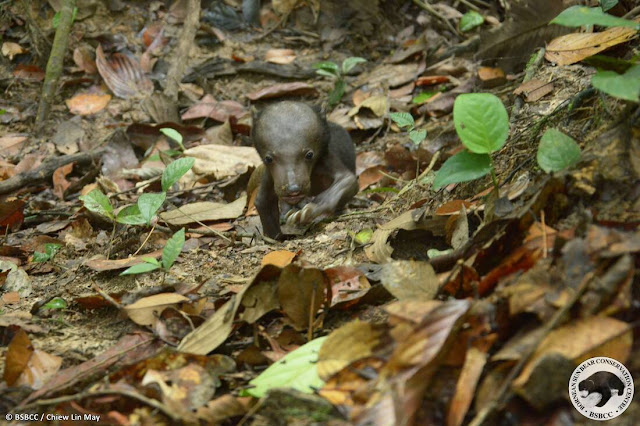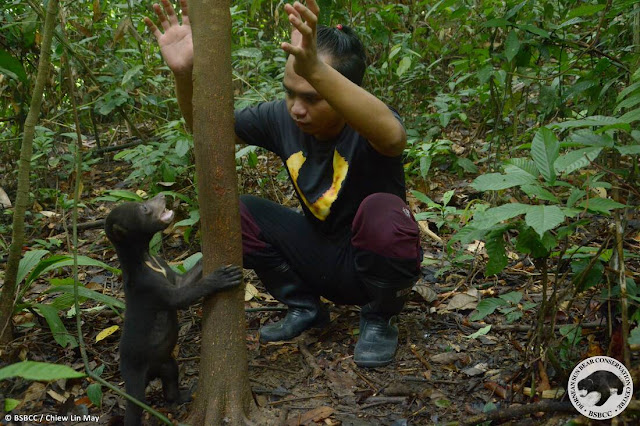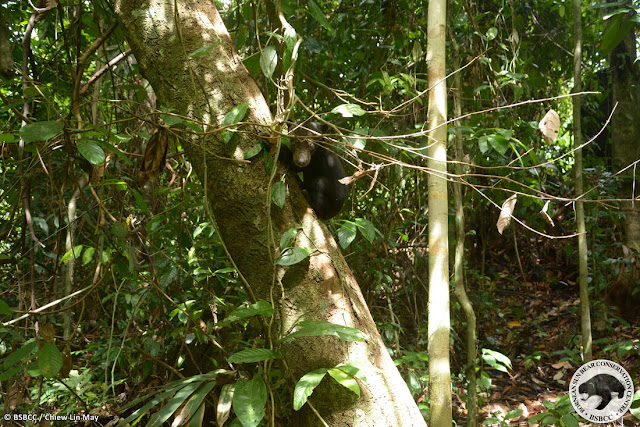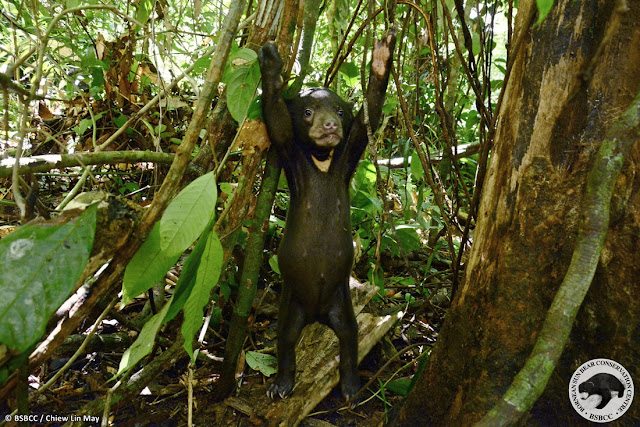Text & Photos by Seng Yen Wah
There are eight bear species in this world and the sun bears are the smallest bear. Sun bears are named as the sun bear because they have the chest patch in the colour range of cream and orange which looks like the rising sun. Every bear has a unique chest mark. This is the best way of identifying an individual bear. This is because no two bears share the same chest mark pattern even when they are a twins.
Although sun bears are the smallest bear, they have the longest tongue. Their tongue can be 25 to 30cm long! The long tongue is an adaptation for licking honey and eating termites and ants. Other than invertebrates and honey, they are also eating a large variety of fruit species, especially figs. This is because fig trees produce fruit all year long. Therefore, sun bears are considered as the opportunistic omnivores. As the food is available all year round, sun bears are the only bears that do not hibernate.
Sun bears can be found throughout South East Asia. There are two subspecies of sun bears which are Malayan sun bears and Bornean sun bears. Malayan sun bears are found on the Asian Mainland and in Sumatra while Bornean sun bears are only found in Borneo. The difference between the Malayan sun bears and Bornean sun bears is their size. Malayan sun bears are bigger than the Bornean sun bears. Sun bears are a forest-dependent species. Their large, sickle-shaped (curved) claws are important tools for them because they can spend most daylight hours foraging, digging and climbing. Sun bears are the arboreal animal. They are the excellent climbers. They often take naps on the tree. Sun bears climb trees in the wild to not only find fruits and look for honeybees but also to avoid predators such as pythons. I wonder if you know that sun bears can build a nest? It can be a tree nest or a ground nest. Sometimes people are confused between an orangutan’s nest and a sun bear’s nest. They look alike but sun bear’s nest look messier. Mostly they use the tree leaves and tree branches to build up the nest. They can spend a few days building a nest. However, not every bear has the ability to build a nest. Therefore, they will borrow other bear’s nests. People say sharing is caring and sun bears as well! Sun bears not only spend time in the trees but also spend time on the forest floors. They are more likely to dig for snacks such as termites, ants, pill millipede and others. Or else, they are foraging for fruit in the forest. They grip on the tree bark or rip apart the decayed wood for getting yummy, crunchy snacks. The different types of invertebrates are the important protein source for them. Sun bears are having outstanding sense of smell and excellent hearing. Among all the senses, the bear's eyesight is considered as not good. They are near-sighted but they can detect form and movement at a long distance. They depend on their senses to be alert to their surroundings. This is their wild instinct to protect and defend themselves.
"Each species is a masterpiece, a creation assembled with extreme care and genius." - Edward O. Wilson.Sun bear is the least known bear species. Therefore, they need your attention for saving them from extinction.





















































